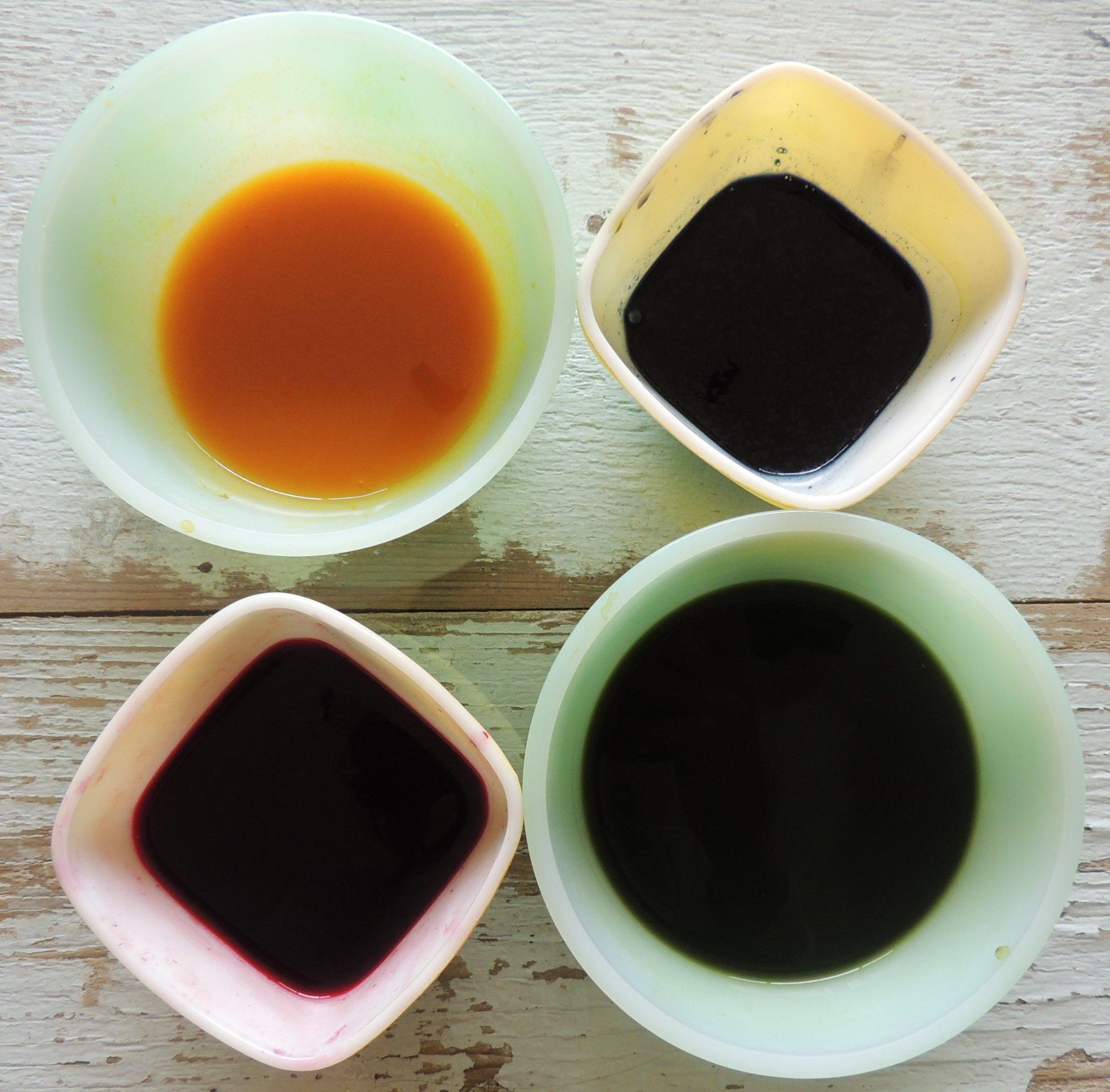All Natural, Vegetable-based Food Dyes
Using natural, vegetable-based dyes was all the rage back in the day! Today, it’s cheaper for food companies to use chemical dyes instead of natural ones. Although many food dyes have been approved by the FDA, over the years, many have been removed from the FDA's list, and there are now new colours (yellow #5 and yellow #6) currently under scrutiny.
This randomized, double-blind, placebo-controlled experiment recently exposed how food dyes may affect hyperactivity in children (a symptom of ADHD)! Since I already try to avoid foods with additives, preservatives, chemicals, and artificial dyes, it didn’t make sense to add them to my Easter eggs consciously!
So, I decided to try out the old-fashioned way. I had a lot of fun making the all-natural, vegetable-based food dyes and was up late experimenting! A word of warning, though: making homemade food dyes creates a lot of dishes and cleanup. The colours that I made were pink, yellow, blue and green! They may not be the traditional Easter-y hues you’re used to, but I think they turned out pretty good, considering I just used food in my fridge to colour them!
** Unlike chemical dyes, these natural ones are not strong enough to penetrate the egg’s shell, so you’ll have to peel them first for colourful eggs.
Yellow
I used fresh turmeric to make it yellow, but you could also use ground turmeric or saffron. If you have a juicer, juice the fresh turmeric. If you don’t have a juicer (I don’t), blend the turmeric with a couple tablespoons of water, and then, using cheesecloth or something similar, squeeze out the juice—this will be your yellow dye. Compost the pulp or add it to a smoothie. WARNING: Turmeric is quite a powerful dye and stains your hands…and anything else it touches. Learned this the hard way.
Pink
To make pink, I used beets, of course. As I mentioned, juice a beet or blend it in a blender with a couple of tablespoons of water, and squeeze out the juice with a cheesecloth.
Green
For green, you can use parsley or cilantro. You might even be able to use kale, but I haven't tried--I used cilantro. In a blender, throw in a handful of greenery and add one tablespoon of water. Squeeze out the juice with a cheesecloth.
Blue
Blue was a bit trickier. Since there are no naturally true-blue foods, you have to use a bit of science. To make blue, you’ll need half of a small purple cabbage. Roughly, cop up the cabbage and put it in a pot. Fill the pot with just enough water to cover the cabbage. Boil it for 10 minutes, then remove the cabbage, leaving the vibrantly purple liquid. Continue to cook the liquid until it’s reduced to about ¼ cup. Transfer the dye to a small dish and add a tiny pinch of baking soda—voila, blue!
How to Make Easter-y Deviled Eggs!
You’ll need about six eggs, all the dyes listed, chives, mayo, and Dijon mustard.
Hard boil the eggs, let them cool and then peel them.
Cut the eggs in half length-wise, and scoop the yolks into a small bowl.
Rinse and dry to whites before colouring.
Colour the whites—some may need to sit in specific colours longer than others.
Mix the yolks with mayo, djon, and chives. (Or, however, you like them! I assume everyone already makes deviled eggs and has their way, so I won’t provide measurements.)
Fill the now-coloured eggs “whites” with the yolk filling and serve :)
Have a great, long Easter weekend, everybody!


